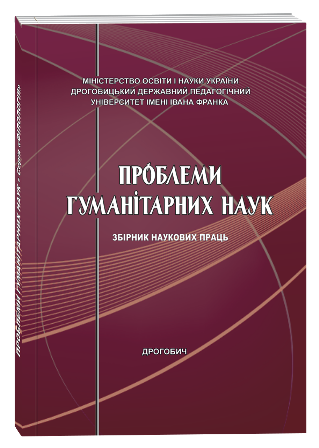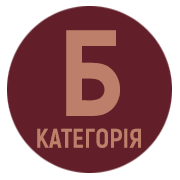AQUAPHONEMES IN UKRAINIAN- AND ENGLISH-LANGUAGE POETIC WORKS: THE PECULIARITIES OF FUNCTIONING
DOI:
https://doi.org/10.24919/2522-4565.2022.52.1Keywords:
sound symbols, landscape, water, marineAbstract
Water is a universal symbol of almost all world traditions. At the same time, it is endowed with a wide variety of functions. Its individual features determined its personification, made it a symbol of eternal movement, purification and at the same time destruction. It is considered as the basis of the foundations, the fullness of all possibilities, the synthesis and determinism of elements. This article is an attempt at a comparative analysis of the functioning of sound images related to water in the Ukrainian and English languages. A number of poetic works of the Ukrainian sixties and vivid examples of landscape lyrics by Australian writers were chosen to compare these aquaphonos. The choice of the latter is due to the fact that this layer of English-language literature remains insufficiently studied. Ways of creating images in literature are in the spheres of research of two sciences — literary studies and linguistics. The sound content of nature paintings is analyzed from the perspective of sound in landscape descriptions as an artistic element, which allows us to reveal the psychological subtext and emotional content of nature descriptions. The compactness of the poetic text dictates the selection of words with multifaceted semantics, the more meanings a word has, the richer the text is in terms of content and imagery, and the stronger the emotional resonance. The creation of sound images or sound symbolism involves the generation of artistic meanings by the sound envelope of words. At the phonetic level of the language of an artistic work, we are dealing with artistic sound recording. Sound recording is a system of sound instrumentation aimed at creating a sound image. The main elements of artistic sound recording are: harmony and disharmony, euphony and cacophony, alliteration and assonance, sound repetitions and sound imitation. In many ways, it is thanks to the semantically loaded sound combinations and their ability to interact that the poet can more clearly give the reader the opportunity to listen and hear his poem, as well as see and feel it.
References
Бодлер Ш. Об искусстве. Москва : Искусство, 1986. 422 с.
Драч І. Берло : Книга поезій. Київ : Грамота, 2007. 912 с.
Левицький В. Символічні значення українських голосних і приголосних. Мовознавство. 1973. № 2. С. 36–49.
Ліна Костенко: Навчальний посібник-хрестоматія. Кіровоград : Степова Еллада, 1999. 320 с.
Стус В. Час творчості / Dichtensezeit. Київ : Дніпро, 2005. 704 с.
Якобсон Р. Лингвистика и поэтика. Структурализм: за и против / под ред. Е. Я. Басина и М. Я. Полякова. Москва : Прогресс, 1975. С. 193–230.
Beveridge J. Mud Crabs, Low Tide. The Domesticity of Giraffes. Publisher: Wentworth Falls, Black Lightning Press, 1987. 256 р.
Beveridge J. Landbridge: Contemporary Australian Poetry. Publisher: Fremantles Arts Centre Press, 1999.300 р.
Bloomfield L. Linguistic aspects ofscience. Chic ago, 1947. 350 р.
McCrum A. Motivation in the word initial consonant on set. URL: http: //www.conknet.com/ ~ mmagnus/SSArticles/McCrumDef.html.
Wright J. The moving image. Melburne: Meanjin Press. 1946. 276 p.



